
The liturgical year, also called the church year, Christian year, ecclesiastical calendar, or kalendar, consists of the cycle of liturgical days and seasons that determines when feast days, including celebrations of saints, are to be observed, and which portions of scripture are to be read.

Advent is a season observed in most Christian denominations as a time of expectant waiting and preparation for both the celebration of the Nativity of Christ at Christmas and the return of Christ at the Second Coming. Advent is the beginning of the liturgical year in Western Christianity. The name was adopted from Latin adventus, translating the Greek parousia from the New Testament, originally referring to the Second Coming.
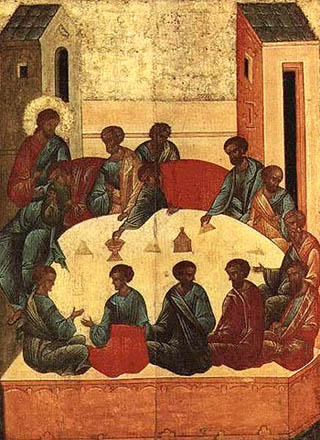
Maundy Thursday or Holy Thursday, among other names, is the day during Holy Week that commemorates the Washing of the Feet (Maundy) and Last Supper of Jesus Christ with the Apostles, as described in the canonical gospels.

Traditionalist Catholicism is a movement that emphasizes beliefs, practices, customs, traditions, liturgical forms, devotions and presentations of teaching associated with the Catholic Church before the Second Vatican Council (1962–1965). Traditionalist Catholics particularly emphasize the Tridentine Mass, the Roman Rite liturgy largely replaced in general use by the post-Second Vatican Council Mass of Paul VI.

The Priestly Fraternity of Saint Peter is a traditionalist Catholic society of apostolic life for priests and seminarians. It is in communion with the Holy See. It was founded in 1988 by 12 former members of the Society of Saint Pius X (SSPX) who left following the Écône consecrations, which resulted in the SSPX bishops being excommunicated by the Holy See.

The Latin Mass Society of England and Wales is a Catholic society dedicated to making the Extraordinary Form of the Roman Rite, also known as the Tridentine Mass, more widely available in England and Wales. The group organised a petition for the Latin Mass in England and Wales which the Archbishop of Westminster, John Cardinal Heenan, presented to Pope Paul VI, who granted a papal indult in 1971.
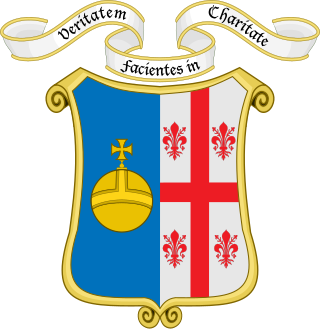
The Institute of Christ the King Sovereign Priest, Latin: Institutum Christi Regis Summi Sacerdotis, abbreviated as ICRSS and ICKSP, is a society of apostolic life of pontifical right in communion with the Holy See of the Catholic Church. The institute has the stated goal of honouring God and the sanctification of priests in the service of the Catholic Church and souls. An integral part of the institute's charism is the use of the traditional liturgy, namely the 1962 Missale Romanum for Mass, the Breviary of John XXIII for the Divine Office, and the Rituale Romanum and Pontificale Romanum for other sacraments. The society has undertaken the restoration of a number of historic church buildings.

Brompton Oratory, also known as the London Oratory, is a neo-classical late-Victorian Catholic parish church in the Brompton area of the Royal Borough of Kensington and Chelsea, neighbouring Knightsbridge, London. Its name stems from Oratorians, who own the building, live nextdoor at the London Oratory, and service the parish. The church's formal title is the Church of the Immaculate Heart of Mary.
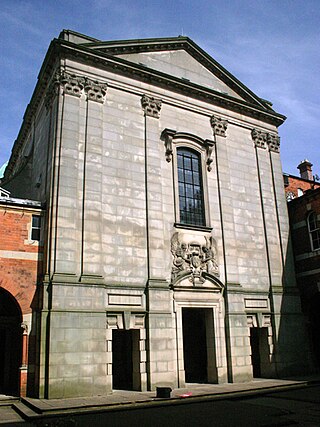
The Birmingham Oratory is a Catholic religious community of the Oratory of St. Philip Neri, located in the Edgbaston area of Birmingham. The community was founded in 1849 by John Henry Newman as the first house of that congregation in England.

The London Oratory, officially the Congregation of the Oratory of St Philip Neri in London, is a Catholic community of priests living under the rule of life established by Philip Neri (1515-1595). It is located in an Oratory House, next to the Church of the Immaculate Heart of Mary in the Brompton Road, Royal Borough of Kensington and Chelsea, London, SW7.

St. Stanislaus Roman Catholic Oratory is a Roman Catholic parish in the historic Mitchell Street District of Milwaukee, Wisconsin. It was designed by Polish nobleman Leonard Kowalski, one of Milwaukee's early Polish residents, who took the name Leonard Schmidtner and spoke German.
The Church of the Risen Christ is a Roman Catholic church in Singapore. It is located at Toa Payoh Central in the Toa Payoh Housing Estate and was founded in 1971.

The Oxford Oratory Church of St Aloysius Gonzaga is the Catholic parish church for the centre of Oxford, England. It is located at 25 Woodstock Road, next to Somerville College. The church is served by the Congregation of the Oratory.

The Mass is the central liturgical service of the Eucharist in the Catholic Church, in which bread and wine are consecrated and become the body and blood of Christ. As defined by the Church at the Council of Trent, in the Mass "the same Christ who offered himself once in a bloody manner on the altar of the cross, is present and offered in an unbloody manner". The Church describes the Mass as the "source and summit of the Christian life", and teaches that the Mass is a sacrifice, in which the sacramental bread and wine, through consecration by an ordained priest, become the sacrificial body, blood, soul, and divinity of Christ as the sacrifice on Calvary made truly present once again on the altar. The Catholic Church permits only baptised members in the state of grace to receive Christ in the Eucharist.
In the canon law of the Catholic Church, an oratory is a place which is set aside by permission of an ordinary for divine worship, for the convenience of some community or group of the faithful who assemble there, but to which other members of the faithful may have access with the consent of the competent superior. The word oratory comes from the Latin verb orare, to pray.
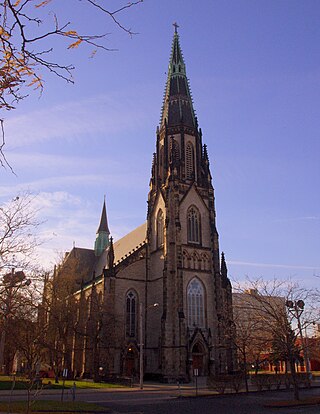
St. Joseph Shrine, founded in 1855, is a historic German Catholic church located at 1828 Jay Street in the Eastern Market–Lafayette Park neighborhood area just outside downtown Detroit, Michigan, on the city's central east side. The building was listed on the National Register of Historic Places in 1972, and deemed "of national importance" because of its stained glass. Three subsidiary buildings—the rectory, convent, and the Wermers House—were added to the listing in 1992. It is under the jurisdiction of the Archdiocese of Detroit, and presently a shrine dedicated to the celebration of the pre-Vatican II liturgy under the care of the canons of the Institute of Christ the King Sovereign Priest.

St. Francis de Sales Church is a Roman Catholic Oratory located in south St. Louis, Missouri, United States. It is the second largest church in the Archdiocese of St. Louis after the cathedral-basilica. The church is popularly known as the "Cathedral of South St. Louis".
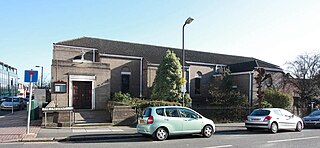
Christ the King Church is a Roman Catholic Parish church in the Wimbledon Park area of Wimbledon in the London Borough of Merton. It was founded in 1913, and built in 1926 by the Society of Jesus. The architect was Adrian Gilbert Scott.

In the Catholic Church, preconciliar Latin liturgical rites coexist with postconciliar rites. In the years following the Second Vatican Council, Pope Paul VI initiated significant changes. Some of Paul VI's contemporaries, who considered the changes to be too drastic, obtained from him limited permission for the continued use of the previous Roman Missal. In the years since, the Holy See has granted varying degrees of permission to celebrate the Roman Rite and other Latin rites in the same manner as before the council. The use of preconciliar rites is associated with traditionalist Catholicism.
















